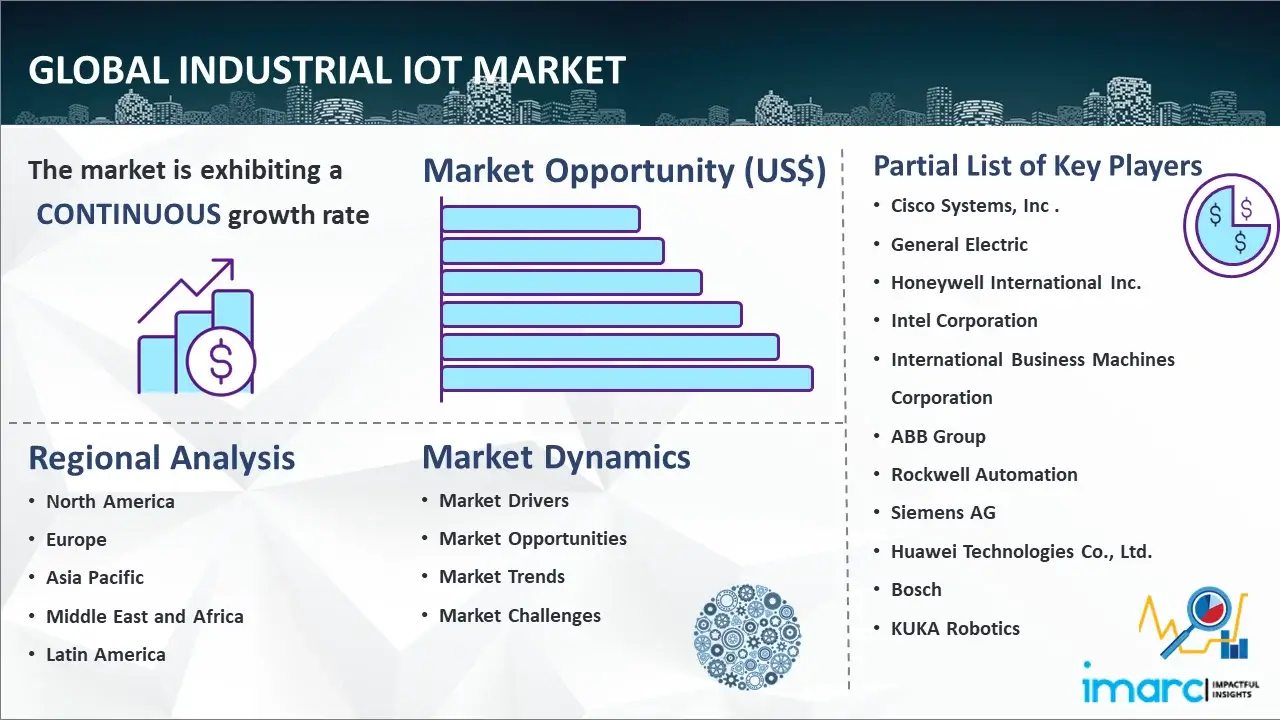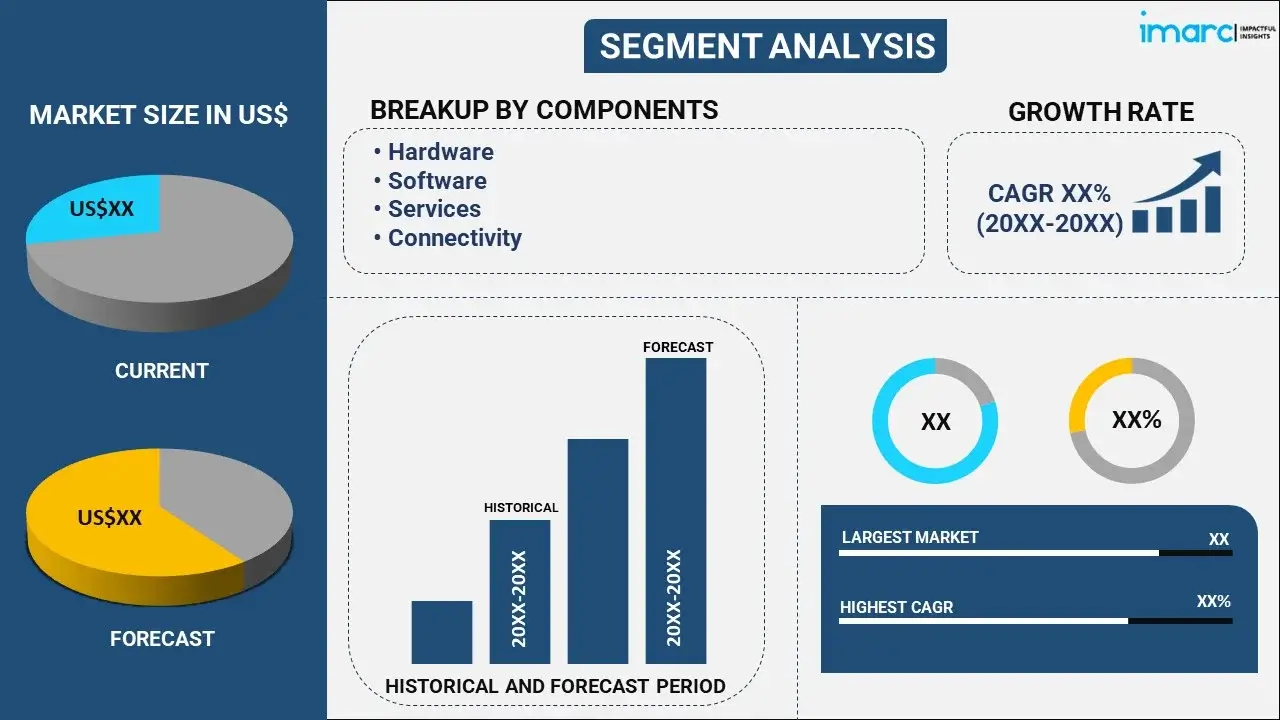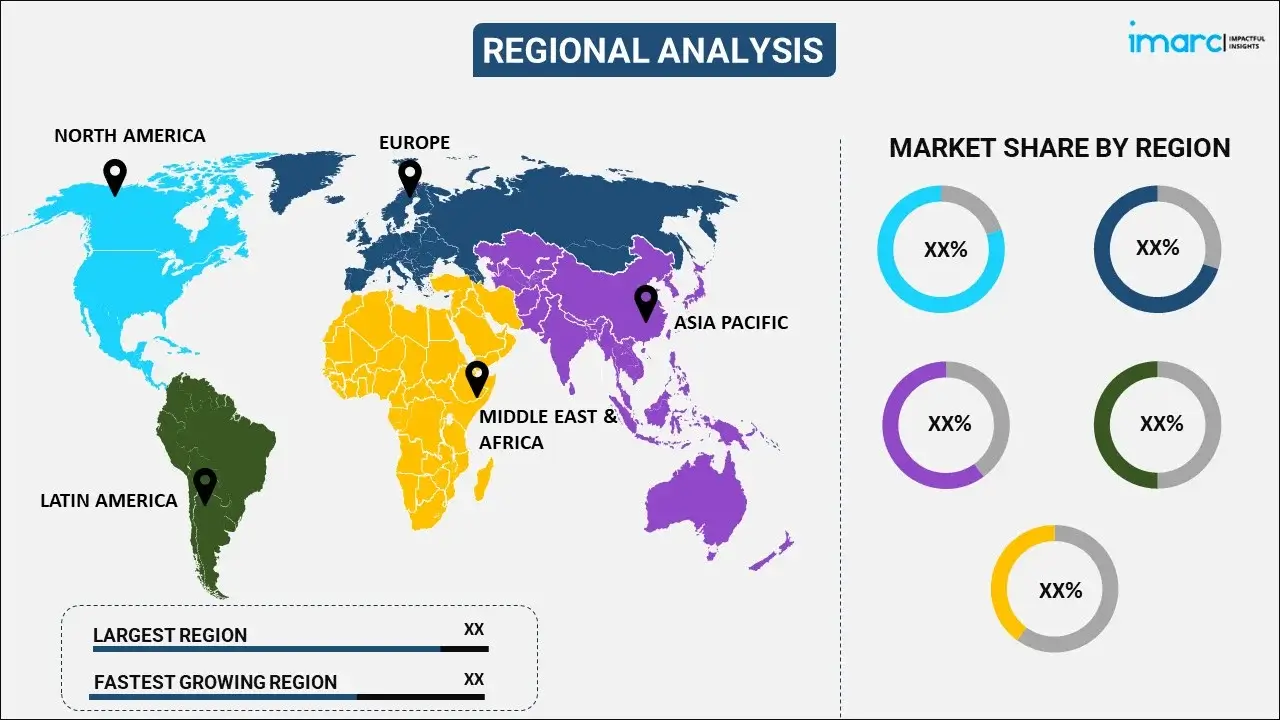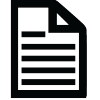IMARC made the whole process easy. Everyone I spoke with via email was polite, easy to deal with, kept their promises regarding delivery timelines and were solutions focused. From my first contact, I was grateful for the professionalism shown by the whole IMARC team. I recommend IMARC to all that need timely, affordable information and advice. My experience with IMARC was excellent and I can not fault it.
Read More
Industrial IoT Market Report by Component (Hardware, Software, Services, Connectivity), End User (Manufacturing, Energy and Utilities, Automotive and Transportation, Healthcare, and Others), and Region 2024-2032
Market Overview:
The global Industrial Internet of things (IIoT) market size reached US$ 255.3 Billion in 2023. Looking forward, IMARC Group expects the market to reach US$ 806.0 Billion by 2032, exhibiting a growth rate (CAGR) of 13.2% during 2024-2032. The rising demand for connected devices, the increasing utilization of IoT across different industry verticals, and the introduction of advanced technologies in manufacturing semiconductors and electrical appliances are some of the major factors propelling the market.
|
Report Attribute
|
Key Statistics
|
|---|---|
|
Base Year
|
2023 |
|
Forecast Years
|
2024-2032
|
|
Historical Years
|
2018-2023
|
| Market Size in 2023 | US$ 255.3 Billion |
| Market Forecast in 2032 | US$ 806.0 Billion |
| Market Growth Rate 2024-2032 | 13.2% |
Industrial Internet of Things (IIoT), often referred to as Industrial IoT, is a transformative technological concept that involves the integration of Internet of Things (IoT) technologies into industrial and manufacturing processes. It extends the principles of IoT, which connect everyday objects and devices to the internet to gather and share data, to industrial settings and machinery. IIoT systems use advanced connectivity technologies, including Wi-Fi, cellular networks, Bluetooth, and low-power wide-area networks (LPWAN), to transmit data from sensors to central platforms for analysis. The primary objective of IIoT is to improve efficiency, productivity, and safety in industries such as manufacturing, energy, transportation, healthcare, and more.

The market is experiencing a significant boost due to several key factors. One of the primary drivers is the rapid urbanization and industrialization occurring worldwide, accompanied by a growing global population that is fueling the demand for connected devices. Additionally, the widespread adoption of the Internet of Things (IoT) across various industry sectors, including transportation, oil and gas, retail, and infrastructure, is contributing positively to market growth. Moreover, the manufacturing industry is embracing AI and IoT technologies for applications like predictive maintenance, early warnings, optimizing production processes, and enhancing quality control. Furthermore, continuous advancements in semiconductor manufacturing and electrical appliances are making significant contributions to the market's expansion. Besides, the utilization of cloud computing platforms and the standardization of IPv6 are further driving market growth by providing scalable and efficient solutions. Additionally, industry players are increasing their investments in extensive research and development (R&D) activities to stay at the forefront of technological advancements, which is expected to further propel the market's growth.
Industrial IoT Market Trends/Drivers:
Escalating demand for connected devices
As industries and businesses seek to enhance their operational efficiency and gather more data for informed decision-making, there is a growing need for interconnected devices and sensors. These devices enable real-time data collection, sharing, and analysis, leading to improved productivity and cost savings. Besides, IIoT allows for remote monitoring and control of industrial equipment and systems. This capability reduces the need for on-site inspections and manual interventions, leading to cost savings and improved safety, especially in hazardous environments. Moreover, IIoT complements the trend of automation in industrial processes. The integration of connected devices with automation systems enhances overall efficiency by minimizing human intervention and enabling processes to run autonomously.
Increasing utilization of IoT across different industry verticals
IoT devices in various industry sectors, such as manufacturing, energy, healthcare, and transportation, are continuously collecting vast amounts of data from sensors and connected devices. This data includes information about equipment performance, environmental conditions, product quality, and more. The integration of IoT into these verticals enables businesses to gather real-time data, providing valuable insights for decision-making and process optimization. Moreover, IoT devices are used to automate and control industrial processes. This automation leads to increased efficiency and accuracy in production, as well as reduced human intervention. IIoT enables remote monitoring and control of equipment and processes, enhancing operational control and flexibility. IoT sensors and connected systems are used to monitor and manage energy consumption in industrial facilities. This leads to energy savings by identifying opportunities to optimize energy usage, reduce waste, and implement more efficient energy management practices, which is propelling the market.
Introduction of advanced technologies in manufacturing semiconductors and electrical appliances
Advanced semiconductor manufacturing techniques have led to the development of more precise and efficient sensors. These sensors can collect data with higher accuracy and at a faster rate, which is crucial for IIoT applications. For instance, in smart manufacturing, precise sensors can monitor equipment performance and detect anomalies in real time, enabling predictive maintenance and reducing downtime. Besides, semiconductors are now being designed with built-in IoT capabilities. These IoT chips can be embedded into various electrical appliances and industrial equipment, allowing them to connect to the internet and share data seamlessly. This integration simplifies the deployment of IIoT solutions, making them more accessible to manufacturers. Moreover, advanced semiconductor technologies enable better connectivity options, including low-power wireless communication protocols like Bluetooth Low Energy (BLE) and Zigbee. These technologies facilitate the creation of IoT networks within industrial environments, ensuring reliable and efficient data transmission between devices.
Industrial IoT Industry Segmentation:
IMARC Group provides an analysis of the key trends in each segment of the global industrial IoT market report, along with forecasts at the global and regional levels for 2024-2032. Our report has categorized the market based on component and end user.
Breakup by Component:

- Hardware
- Software
- Services
- Connectivity
Hardware represents the most used component
The report has provided a detailed breakup and analysis of the market based on the component. This includes hardware, software, services, and connectivity. According to the report, hardware components represented the largest segment.
Hardware components include a wide range of sensors and devices that are essential for collecting data from the physical world. These sensors can monitor various parameters such as temperature, pressure, humidity, vibration, and more. They serve as the eyes and ears of IIoT systems, capturing real-world data that is crucial for monitoring and controlling industrial processes. Moreover, they provide the means for connectivity in IIoT. This includes communication modules, such as Wi-Fi, cellular, Bluetooth, and LPWAN, that enable data transmission from sensors to central processing units or cloud platforms. Besides, IIoT hardware includes processing units, microcontrollers, and edge computing devices that can perform initial data analysis and preprocessing. This capability is vital for reducing latency and ensuring timely decision-making, especially in applications where real-time responses are critical.
Breakup by End User:
- Manufacturing
- Energy and Utilities
- Automotive and Transportation
- Healthcare
- Others
Manufacturing industry accounts for the majority of market share
A detailed breakup and analysis of the market based on the end user has also been provided in the report. This includes manufacturing, energy and utilities, automotive and transportation, healthcare, and others. According to the report, the manufacturing industry represented the largest segment.
Manufacturing processes are inherently complex, involving various machines, equipment, and production lines. IIoT technology can seamlessly connect and monitor these components, making it highly beneficial for optimizing production efficiency, reducing downtime, and enhancing overall productivity. Besides, IIoT solutions enable predictive maintenance, allowing manufacturers to identify and address equipment issues before they lead to costly breakdowns. This results in reduced maintenance costs, minimized production disruptions, and improved resource allocation. Moreover, quality control is critical in manufacturing to ensure that products meet industry standards and customer expectations. IIoT sensors and data analytics help in real-time quality monitoring, enabling immediate adjustments and reducing defective product output.
Breakup by Region:

- North America
- Europe
- Asia Pacific
- Middle East and Africa
- Latin America
Europe exhibits a clear dominance in the market
The market research report has also provided a comprehensive analysis of all the major regional markets, which North America, Asia Pacific, Latin America, and the Middle East and Africa. According to the report, Europe accounted for the largest market share.
Europe has a robust and diverse industrial base, encompassing manufacturing, automotive, aerospace, healthcare, and more. This strong industrial presence creates a substantial demand for IIoT solutions to enhance efficiency, productivity, and competitiveness. Moreover, European countries have a long history of innovation and investment in technology. Governments and industries in Europe have been at the forefront of adopting emerging technologies like IIoT to maintain a competitive edge in the global market. Besides, the region has implemented regulations and standards that promote the adoption of IIoT for various purposes, including environmental monitoring, energy efficiency, and safety. These regulations drive the demand for IIoT solutions that help companies comply with these standards.
Competitive Landscape:
The competitive landscape of the market is characterized by the presence of multiple players that include established brands, emerging startups, and specialty manufacturers. Presently, leading companies are expanding their product and service offerings to cater to a broader range of industries and applications. This includes developing specialized IIoT solutions for sectors like manufacturing, energy, healthcare, and logistics. They are also forming strategic partnerships and alliances with other technology companies, system integrators, and industry-specific organizations. These collaborations help create comprehensive IIoT ecosystems and provide customers with end-to-end solutions. Moreover, companies are allocating significant resources to R&D efforts to develop cutting-edge IIoT technologies, including advanced sensors, communication protocols, and analytics capabilities.
The market research report has provided a comprehensive analysis of the competitive landscape in the market. Detailed profiles of all major companies have also been provided. Some of the key players in the market include:
- Cisco Systems, Inc.
- General Electric
- Honeywell International Inc.
- Intel Corporation
- International Business Machines Corporation
- ABB Group
- Rockwell Automation
- Siemens AG
- Huawei Technologies Co., Ltd.
- Bosch
- KUKA Robotics
- Texas Instruments Incorporated
- Dassault Systèmes SE
- PTC
- Arm Limited
- NEC Corporation.
Recent Developments:
- In February 2023, Cisco Systems added new products to its cloud tools to provide further visibility and control over networks. The new cloud management tools are designed for industrial IoT (IIoT) apps to simplify IT and OT operations dashboards and provide flexible network intelligence for industrial assets.
- In June 2020, Intel Corporation in partnership with Nebbiolo for edge computing software, helped German automaker Audi automate and enhance critical quality-control processes in its factories.
- In October 2020, Honeywell International partnered with Microsoft to integrate the Honeywell Forge industrial analytics platform with the Dynamics 365 Field Service offering and Azure.
Industrial IoT Market Report Scope:
| Report Features | Details |
|---|---|
| Base Year of the Analysis | 2023 |
| Historical Period | 2018-2023 |
| Forecast Period | 2024-2032 |
| Units | US$ Billion |
| Scope of the Report | Exploration of Historical Trends and Market Outlook, Industry Catalysts and Challenges, Segment-Wise Historical and Predictive Market Assessment:
|
| Components Covered | Hardware, Software, Services, Connectivity |
| End Users Covered | Manufacturing, Energy and Utilities, Automotive and Transportation, Healthcare, Others |
| Regions Covered | Asia Pacific, Europe, North America, Latin America, Middle East and Africa |
| Companies Covered | Cisco Systems, Inc., General Electric, Honeywell International Inc., Intel Corporation, International Business Machines Corporation, ABB Group, Rockwell Automation, Siemens AG, Huawei Technologies Co., Ltd., Bosch, KUKA Robotics, Texas Instruments Incorporated, Dassault Systèmes SE, PTC, Arm Limited, NEC Corporation, etc. |
| Customization Scope | 10% Free Customization |
| Report Price and Purchase Option | Single User License: US$ 3899 Five User License: US$ 4899 Corporate License: US$ 5899 |
| Post-Sale Analyst Support | 10-12 Weeks |
| Delivery Format | PDF and Excel through Email (We can also provide the editable version of the report in PPT/Word format on special request) |
Key Benefits for Stakeholders:
- IMARC’s industry report offers a comprehensive quantitative analysis of various market segments, historical and current market trends, market forecasts, and dynamics of the industrial IoT market from 2018-2032.
- The research report provides the latest information on the market drivers, challenges, and opportunities in the global industrial IoT market.
- The study maps the leading, as well as the fastest-growing, regional markets.
- Porter's five forces analysis assist stakeholders in assessing the impact of new entrants, competitive rivalry, supplier power, buyer power, and the threat of substitution. It helps stakeholders to analyze the level of competition within the industrial IoT industry and its attractiveness.
- Competitive landscape allows stakeholders to understand their competitive environment and provides an insight into the current positions of key players in the market.
The global industrial IOT market was valued at US$ 255.3 Billion in 2023.
We expect the global industrial IOT market to exhibit a CAGR of 13.2% during 2024-2032.
The rising adoption of IIoT for enhancing employee productivity, along with integrating and adapting business models to save time and money, is primarily driving the global industrial IOT market.
The sudden outbreak of the COVID-19 pandemic has led to the increasing deployment of IIoT to improve operational efficiencies, monitor, and control business operations remotely, during the lockdown scenario.
Based on the component, the global industrial IOT market has been segregated into hardware, software, services, and connectivity. Among these, hardware component currently holds the largest market share.
Based on the end-user, the global industrial IOT market can be bifurcated into manufacturing, energy and utilities, automotive and transportation, healthcare, and others. Currently, the manufacturing industry exhibits a clear dominance in the market.
On a regional level, the market has been classified into North America, Europe, Asia Pacific, Middle East and Africa, and Latin America, where Europe currently dominates the global market.
Some of the major players in the global industrial IOT market include Cisco Systems, Inc., General Electric, Honeywell International Inc., Intel Corporation, International Business Machines Corporation, ABB Group, Rockwell Automation, Siemens AG, Huawei Technologies Co., Ltd., Bosch, KUKA Robotics, Texas Instruments Incorporated, Dassault Systèmes SE, PTC, Arm Limited, and NEC Corporation.
Need more help?
- Speak to our experienced analysts for insights on the current market scenarios.
- Include additional segments and countries to customize the report as per your requirement.
- Gain an unparalleled competitive advantage in your domain by understanding how to utilize the report and positively impacting your operations and revenue.
- For further assistance, please connect with our analysts.

Purchase options
Benefits of Customization
Personalize this research
Triangulate with your data
Get data as per your format and definition
Gain a deeper dive into a specific application, geography, customer, or competitor
Any level of personalization
Get in Touch With Us

UNITED STATES
Phone: +1-631-791-1145

INDIA
Phone: +91-120-433-0800

UNITED KINGDOM
Phone: +44-753-713-2163
Email: sales@imarcgroup.com
 Inquire Before Buying
Inquire Before Buying Speak to an Analyst
Speak to an Analyst  Request Brochure
Request Brochure  Request Customization
Request Customization



.webp)




.webp)
